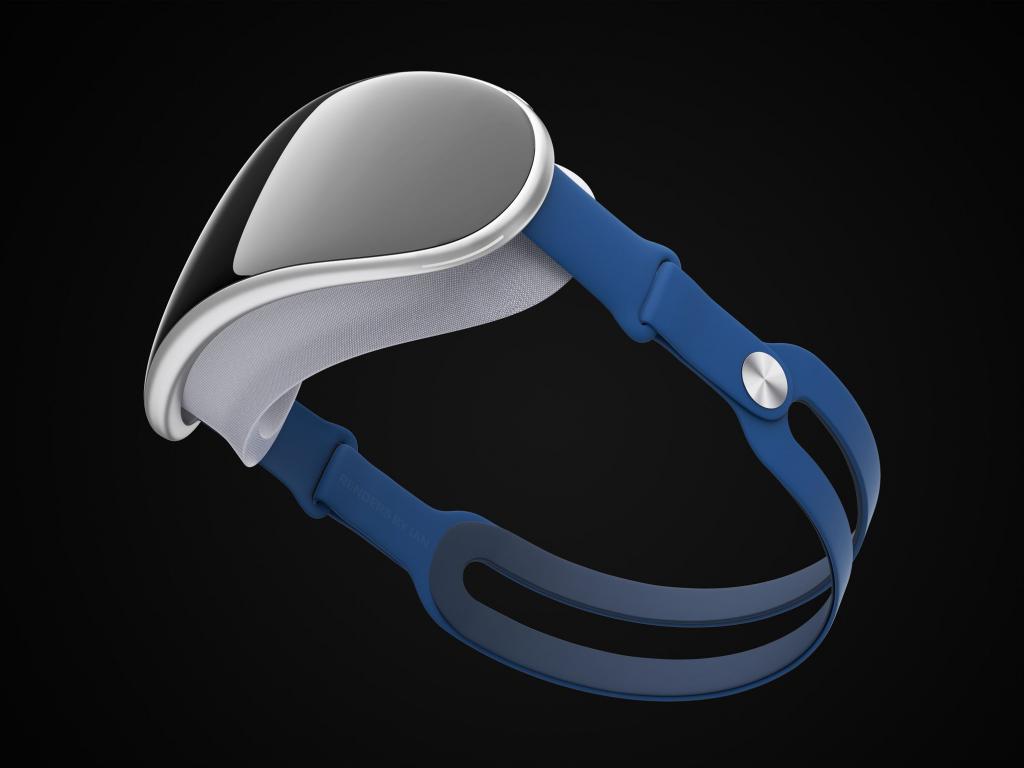Apple's Next Product Line: It's Pricey, Bigger Than The iPhone And A Quarter Century In The Making
Author: Adrian Zmudzinski | June 20, 2022 07:46am
Apple Inc. (NASDAQ:AAPL), being one of the world's most valuable companies, can afford to secretly invest in major moonshot projects that may not see the light of day for a very long time — if ever.
However, one such project that has been in the works for more than 25 years will soon come to fruition.
What Happened: According to Stereoscopic Displays and VR Systems III Preface, Apple demonstrated a wearable computer prototype with a head-mounted display as far back as 1996. And in an Apple Research report titled "Volumetric Hyper Reality, A Computer Graphics Holy Grail for the 21st Century?," it's evident that the company has explored hyper-reality and environmental feedback displays as far back as 1995.
See Also: Apple Stock Forecast
Today, Apple boasts a massive augmented reality (AR) and virtual reality (VR) research unit with hundreds of employees. The company has also acquired tons of companies over the years in an effort to become a major player in the AR/VR space.
As a result, the Cupertino, California-based tech giant is now on the verge of debuting at least two separate product lines that could shake up this segment. The first device will be a VR visor with AR features expected to launch as soon as 2023. It was delayed from 2022, but is currently in the final stages of development and was already demonstrated to the company's board of directors.
See Also: Benzinga's primer on VR, AR, MR and XR
This device is also forecasted to be a niche mixed-reality (MR) headset focused on the VR aspects. At a glance, it will be much like Meta Platforms Inc.'s (NASDAQ:FB) Oculus Quest line — capable of standalone operation with battery and onboard processing. It will feature Apple silicon on par with Mac devices, a sleek design and two 8K high-resolution micro OLED displays with a resolution of up to 3,000 pixels per inch. Rumors suggest that the headset may also feature an additional side display for peripheral vision.
Micro OLED displays are built into their chip wafers instead of using a glass substrate like traditional displays. This allows for a much thinner and power-efficient display component with a higher pixel density. Micro OLED pixels also range from four to 20 micrometers, whereas standard OLED pixels are 40 to 300 micrometers.
This new display technology also has a faster response time, a feature critical to ensure that virtual objects appear stationary when a user moves his head.
The headset will also feature as many as fourteen cameras to track hand movement and allow for gestures to be a method of controlling the device alongside eye tracking.
Apple patented a thimble device that can be worn on a finger to allow for fine device control, but it is unclear whether such an input device will be used or just kept among the company's numerous unused patents.
The device's multiple 3D-sensing modules will help with hand sensing and detect objects around the user for MR applications: the device will be "aware" of its physical surroundings allowing digital objects to "interact" with the real world.
Other features include voice control, skin detection, spatial detection, expression detection, immersive video and audio. Data gathered concerning the expressions of the user will purportedly allow for telepresence avatars that accurately mimic his facial expressions in real-time.
The headset is expected to weigh between 200 and 300 grams (with a target of 100 to 200 grams for the final version). It features a headband made from a material similar to Apple Watch's wristband and touching on the face with a soft mesh that prevents light leaking and blocks peripheral vision. The so-called "pancake lenses" are expected to be significantly thinner and lighter in weight, but more expensive than the Fresnel lenses used by Apple's competitors. Also, the close fit of the headset to the face won't allow for wearing it on top of glasses.
Eight of the device's cameras will be used to allow for so-called "passthrough MR," which will show the real world to the user while allowing for it to be augmented with virtual elements. The device's sensors will also be mapping surfaces, edges and dimensions of rooms with accuracy.
The silicon inside the headset will include not one but two powerful processors featuring Apple silicon more advanced than what the firm is currently using in its Macs. The main processor is expected to be similar to the M1 Pro chip that Apple is using in its Macs, alongside it the device will also feature a less powerful processor for managing sensory data. One of the two chips is purportedly produced through a four-nanometer manufacturing process — the latest debuted by Taiwan Semiconductor Manufacturing Company (TSMC) — while the other one through a five-nanometer process.
All this processing power likely delayed the release since the current prototypes reportedly have problems with battery power and overheating.
Apple is now optimizing the device for wireless data transmission, video compression and decompression and power efficiency to extend battery life. The system does not feature a neural engine optimized for artificial intelligence algorithms like much of the silicon developed by the company.
The operative system of Apple's new device lines will be RealityOS (rOS), now confirmed by both a reference in the company's source code and a trademark filing. These devices will have their own App Store focused on gaming, streaming video content and video conferencing — described by Bloomberg as an "all-encompassing 3D digital environment." The device will purportedly support the WiFi 6E standard, which adds the 6 GHz spectrum to the 2.4 GHz and 5 GHz bands to further increase the bandwidth and avoid interference between devices.
The Pain Point
The first iPhone's price of $499 was thought to be outrageous. Recall how then-Microsoft CEO Steve Ballmer said "there’s no chance that the iPhone is going to get any significant market share [since] it’s a $500 subsidized item."
This time, Apple is expected to go even bigger and price the headset at around $3,000. The device will be marketed toward developers, content creators and professionals as opposed to average consumers to justify the price tag.
Apple expects to sell only one such headset per store, for a total of 10 million units in the first year. The AR/VR device line meant for the mass market will be the so-called Apple Glasses (we will explore this much more mysterious device in the upcoming second part of this analysis).
Posted In: AAPL FB





